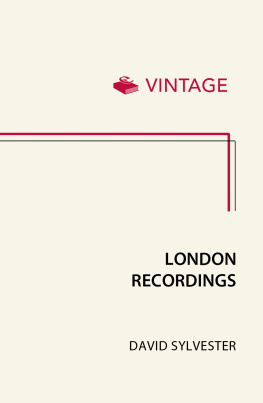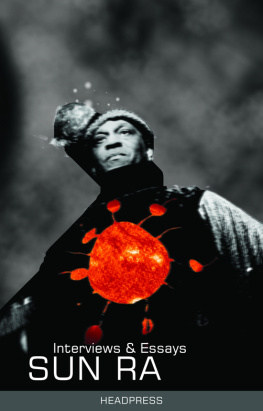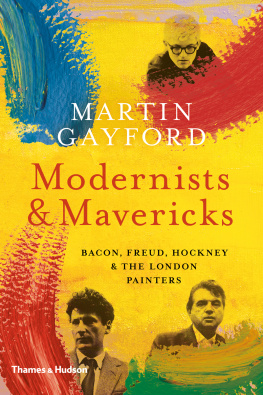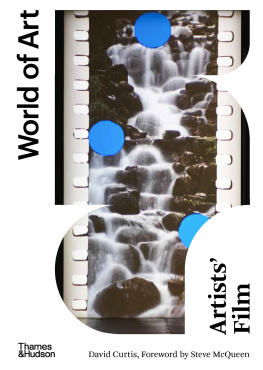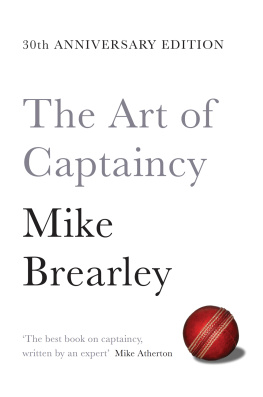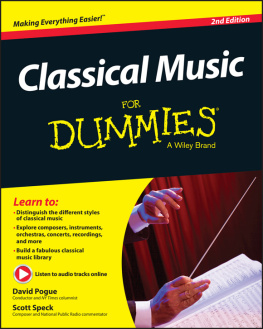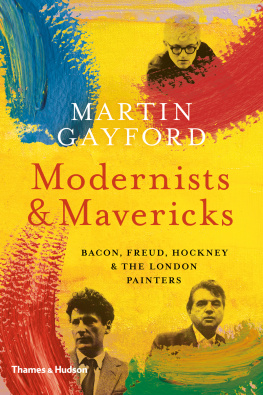CONTENTS
About the Author
David Sylvester (19242001) was a critic of international standing, an authority on contemporary art, and author of key works on Magritte, Henry Moore and Francis Bacon, as well as the acclaimed collections of essays About Modern Art, Interviews with American Artists, and the short account of his early life, Memoirs of a Pet Lamb.
Also by David Sylvester
Henry Moore
Interviews with Francis Bacon
Ren Magritte
Catalogue raisonn of Ren Magritte
(5 vols, editor and co-author)
Looking at Giacometti
About Modern Art: Critical Essays
Looking Back at Francis Bacon
Interviews with American Artists
Memoirs of a Pet Lamb
HENRY MOORE 1963
RECORDED JUNE 1963 at Perry Green, Hertfordshire. Extracts from the version edited for broadcasting by the BBC were first published in the Listener, 29 August 1963. The present version has been edited from the transcript.
DAVID SYLVESTERWhen youre working in materials like wood or stone, youre master of the result, but when youre working for casting in bronze youre not: somebody else intervenes. Does this irritate you?
HENRY MOORE Well, it often does, because the casting problem today is a major headache for, I think, all sculptors mainly because the number of sculptors has increased since the war by fifty-fold, Im sure, and the bronze foundries havent increased. So theyre all doing much more work than they used to and they have to take on staff thats not trained. It is often a disappointment when a cast comes back from a foundry and it isnt as good as it should be.
What can go wrong with a cast?
Well, a cast can be not sharp enough because the wax original or the wax replica hasnt been cast clearly enough. That will then give you a cast thats dull all over, thats lost its sharpness. Then again, the cast may be too uneven in its thicknesses, so that in the cooling of the bronze a thick piece of bronze has to shrink more because theres more bronze to shrink than in a thin piece. Therefore you get distortions and you get twistings, perhaps.
How do you tell a good cast when ones delivered? I mean at first sight and apart from any obvious blurring.
Well, first one looks and it should be sharp. Then after that one knocks on it so that it rings. A good cast gives practically the same tone all over. You generally get better results when the sculpture is cast by the wax process rather than the sand process. The sand process tends to have a thicker top than the wax process does.
Is the advantage of a thinner cast simply that youre more likely to get an even thickness?
Well, one doesnt want it so thin that it could be damaged in transport or by knocks or bangs. But you want it as thin as it can be to keep its strength, so that in transport and in every other way you havent an excess weight. If you have a head leaning forward and its a solid head, that will have a bigger strain on a thin neck than if the whole thing is hollow. And this is why you can have a bronze standing figure perched on one foot, but you cant in stone. Because the bronze is empty above and therefore there isnt all this huge weight being just held up by one toe or something like that. But some Italian founders are so proud of doing a really thin cast that its almost paper-thin and can be damaged in transport. Then theres the other kind which makes it so thick and so heavy that the weight increases the actual cost of the bronze, which is a very expensive material. A good founder will make it the right thickness for its strength, its full strength, but also be economical in the cost of bronze.
Where do you get most of your casting done?
I now have, because of doing rather larger things than I used to do, three or four different founders, because, if I only had one, I should be kept waiting two years for any new thing to be cast. So I have a foundry in Paris and one in West Berlin, and two or three in England.
What about the patination problem? Do you find that foundries can give you what you want?
No. I always patinate bronzes myself. I let them come from the foundry as a raw bronze, a natural bronze, which is rather like a dirty new penny, and then Ill decide whether the bronze is going out of doors in a clean atmosphere and therefore whether whatever patina I give it is likely to remain, or whether its going into a chemical atmosphere, which may turn it black and therefore you might waste a lot of time in trying to make a certain patina that will be lost within six months. Also, one has conceived a sculpture from the beginning as a finished, complete bronze. Sometimes I think of it as a dark bronze, sometimes I think of it even as a highly polished bronze. And all this only I can do. If I leave it to the bronze foundry, they certainly do it wrongly.
What do you have to do when the patina is going to include a variety of colour say, with green and yellow and black and brown?
What one does sometimes is to prepare them for two or three days and then leave them out exposed, and the rain and the sun and the wind will give it a more natural sense. And then, if you think that a thing is beginning to look all right, then you can fix that by waxing it. And when it is waxed it will become a much more even and less varied and less colourful sculpture. But one tries with any patina to help the form of the sculpture rather than obscure it, just as the complexion in a person can help you to see what shape they are. If a young girl who is marvellous has a bad complexion, you dont notice how beautiful she may be. But if you get your complexion, as it were, fitting the form, then thats the ideal.
Obviously in using bronze youre able to do a good many things which you could never do in stone or wood. It gives all sorts of freedom and you can work bigger than it would be practical to work in stone. But do you sometimes get slightly irritated that bronze never really has the very satisfying surface which you get from stone? Does this frustrate you at all?
No. Ive now learnt to like bronze very much indeed. No sculptor works direct in bronze: you cant. You cant take a block of bronze and cut it to the shape. You must make your object in something else, in plaster or clay, plasticine, anything. Wood even can be cast into bronze: those early Gothic gates at Hildesheim were carved in wood and then pushed into the sand in the ground, and the hole that they left was filled with bronze and this was their way of casting. So theyre actual wood sculptures cast into bronze. Bronze is only a medium for making permanent a thing youve made in some other medium. Its a most wonderful and malleable material: it can do anything, almost. Its also almost indestructible. It lasts much much longer than stone, out of doors, anywhere you like.
It just doesnt have that marvellous luminosity of stone.
No. I still love stone. Im much happier when Im carving stone. But then I can get some of that pleasure in making my original, which gets cast into bronze, in plaster. Then you can build up, you can use an axe or a chisel, and you can mix the carving with the modelling technique. And thats why I like working direct in plaster. Because its actually a mixture of carving as well as modelling. I still do some carving in stone or wood, but not as much; but working direct in plaster I still get a lot of the fun I used to get out of carving.
I take it that carving in stone especially is a much greater physical effort than carving in plaster.
No, no. A little bit, but not very much. No. The actual physical thing of carving is a matter of rhythm and of the muscles you use getting used to doing it. Its rather like walking. You work at a certain rate. But one can find stone-carvers of seventy still doing their full days work of carving hard stones. People get this idea that stone-carving is hard work. Its not. Its very pleasurable, soothing work. Its perhaps in a way more pleasurable and more soothing than plaster because it takes longer. Its more like digging a garden.
Next page
